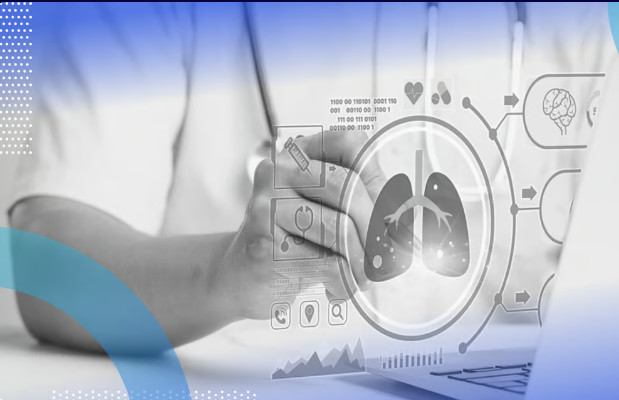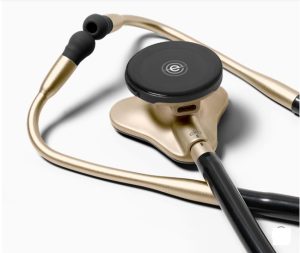MEDICAL DEVICE AI BUILT IN TO TEST YOUR LUNG

This is a rapidly developing field with the potential to improve the diagnosis and management of respiratory conditions. Here are some key areas and examples:
1. AI-POWERED STETHOSCOPES
- Enhanced Auscultation: These stethoscopes use AI to analyze lung sounds, helping to identify:
- Wheezing
- Crackles (rales)
- Other abnormal respiratory sounds
- Examples:
- Eko CORE Digital Stethoscope: Attaches to a traditional stethoscope and uses AI to detect heart murmurs and potentially other lung abnormalities.
- Smartsound Skeeper R1: Analyzes lung sounds to detect wheezing and crackles, providing visual feedback and potential diagnoses.
2. SMART SPIROMETERS
- AI-Guided Spirometry: These devices use AI to guide patients through spirometry tests, ensuring accurate and consistent results. They can also analyze the results to detect potential lung function abnormalities.
- Examples:
- NuvoAir Air Next: A portable spirometer with AI-powered guidance and analysis.
- Resmon Pro: A smart spirometer that provides real-time feedback and personalized insights.
3. COUGH ANALYSIS APPS AND DEVICES
- AI-Based Cough Recognition: These apps or devices use AI to analyze cough sounds and patterns to detect potential respiratory illnesses, such as:
- Pneumonia
- Asthma
- COVID-19
- Examples:
- Hyfe AI: A smartphone app that analyzes cough sounds to detect respiratory illnesses.
- Swaasa® by Salcit Technologies: Uses AI to analyze cough sounds and assess lung health, with a focus on early TB detection.
4. AI-ENHANCED IMAGING
- AI for Chest X-ray Analysis: AI algorithms can analyze chest X-rays to detect abnormalities like pneumonia, tuberculosis, and lung cancer.
- Examples:
- qXR by Qure.ai: An AI-powered solution that analyzes chest X-rays for various abnormalities.
- Aidoc: Provides AI-powered analysis of medical images, including chest X-rays, to assist radiologists in diagnosis.
5. WEARABLE SENSORS
- Continuous Monitoring: Wearable sensors can track respiratory rate, oxygen saturation, and other vital signs, providing continuous data that can be analyzed by AI for early detection of respiratory problems.
- Examples:
- Current Health: A wearable sensor and AI platform for remote patient monitoring, including respiratory monitoring.
- BioIntelliSense BioSticker: A disposable wearable sensor that tracks respiratory rate and other vital signs.
BENEFITS OF AI IN LUNG TESTING
- Improved Accuracy: AI can help detect subtle changes in lung sounds or function that might be missed by traditional methods.
- Early Detection: AI can aid in the early detection of respiratory diseases, leading to timely intervention and better outcomes.
- Remote Monitoring: AI-powered devices can enable remote monitoring of lung health, improving access to care and reducing hospitalizations.
- Personalized Medicine: AI can help personalize treatment plans based on individual patient data and risk factors.
As AI technology continues to advance, we can expect even more innovative and effective medical devices with built-in AI for lung testing in the future. These tools have the potential to transform respiratory care and improve the lives of patients with lung conditions.

